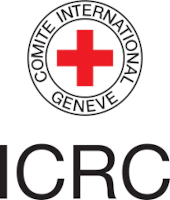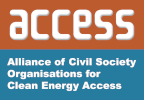Click here to register!
Difference between revisions of "Stove Test Results Ethiopia ECO"
***** (***** | *****) |
***** (***** | *****) |
||
| Line 3: | Line 3: | ||
Numbers of performance tests have been conducted by GIZ-Energy Coordination Office (GIZ-ECO) on different stoves. The tests include Water Boiling Test (WBT), Controlled Cooking Test (CCT) as well as Indoor Air Pollution (IAP) monitoring, where as the stoves tested are mirt, tikikil and institutional rocket stoves which are improved stoves ECO is now promoting but also traditional stoves such as open fire, traditional metal charcoal stove against which comparisons are done. Stoves which have been under development were also tested. | Numbers of performance tests have been conducted by GIZ-Energy Coordination Office (GIZ-ECO) on different stoves. The tests include Water Boiling Test (WBT), Controlled Cooking Test (CCT) as well as Indoor Air Pollution (IAP) monitoring, where as the stoves tested are mirt, tikikil and institutional rocket stoves which are improved stoves ECO is now promoting but also traditional stoves such as open fire, traditional metal charcoal stove against which comparisons are done. Stoves which have been under development were also tested. | ||
| − | The [[File: | + | The [[:File:Stove testing results summary.pdf|Stove testing results summary.pdf]] presents some of the results. Of the many stoves tested, mirt (slim and classic), Tikikil (single- and double-skirt) and institutional rocket stoves (IRS) have been disseminated by ECO in numbers. Institutional mirt, which is basically a cluster of more than one mirt fitted with a chimney, is also beginning to sale. Mirt with integrated chimney is being demanded as a technology and is being considered for dissemination as well. Deluxe Tikikil is provided as alternative to IRS for smaller cooking energy needs of institutions or productive users of the technology (such as restaurants) or households who can afford it. |
| − | As can be seen from the summary, the saving of mirt stove compared with three stones open fire is 50% (summary, item #1 and 2; Memo, Result of stove testing, Hiwote Teshome, Internal report, GTZ-SUN Energy, 06.06.2007), based on CCT. However, there is a slight increase in time required (5-7% more) to prepare the same number of injeras. | + | As can be seen from the summary, the saving of mirt stove compared with three stones open fire is 50% ([[:File:Stove testing results summary.pdf|Stove testing results summary.pdf]], item #1 and 2; [[:File:Memo, Result of stove testing, Hiwote Teshome, Internal report, GTZ-SUN Energy, 06.06.2007.pdf|Memo, Result of stove testing, Hiwote Teshome, Internal report, GTZ-SUN Energy, 06.06.2007.pdf]]), based on CCT. However, there is a slight increase in time required (5-7% more) to prepare the same number of injeras. |
| − | The gain in fuel saving of mirt (without chimney) is a little compromised when attaching chimney to it (as in mirt with integrated chimney)-again based on CCT this stove has a saving of 42% (summary, item #4; Stove testing results, A report on controlled cooking test results performed on ‘Mirt with integrated chimney’ and ‘Institutional mirt’ stoves, Report by Anteneh Gulilat, May 23, 2011.). Clustering mirt stoves into four and attaching one big chimney to them to channel all the smoke out does not seem to have a significant effect on the saving though. Here the saving is seen to be 49% (summary, item #5). The chimney seems to have, on the other hand, a positive contribution to reducing the time required to bake the same number of injeras- in both mirt with integrated chimney and institutional mirt there is a gain of 15% and 16.5%, respectively, in time reductions. This is an advantage additional to the smoke removal. | + | The gain in fuel saving of mirt (without chimney) is a little compromised when attaching chimney to it (as in mirt with integrated chimney)-again based on CCT this stove has a saving of 42% ([[:File:Stove testing results summary.pdf|Stove testing results summary.pdf]], item #4; [[:File:Stove testing results, A report on controlled cooking test results performed on ‘Mirt with integrated chimney’ and ‘Institutional mirt’ stoves, Report by Anteneh Gulilat, May 23, 2011..pdf|Stove testing results, A report on controlled cooking test results performed on ‘Mirt with integrated chimney’ and ‘Institutional mirt’ stoves, Report by Anteneh Gulilat, May 23, 2011..pdf]].). Clustering mirt stoves into four and attaching one big chimney to them to channel all the smoke out does not seem to have a significant effect on the saving though. Here the saving is seen to be 49% ([[:File:Stove testing results summary.pdf|Stove testing results summary.pdf]], item #5). The chimney seems to have, on the other hand, a positive contribution to reducing the time required to bake the same number of injeras- in both mirt with integrated chimney and institutional mirt there is a gain of 15% and 16.5%, respectively, in time reductions. This is an advantage additional to the smoke removal. |
| − | The indoor air pollution contribution of the stoves was also monitored experimentally (i.e. in a simulated kitchen such as when CCT is conducted). Again from the summary it can be seen that mirt has a potential to significantly reduce pollutant levels in the kitchen compared to three stone/open fire- around 90% and 30% respectively for CO and PM were recorded (summary, item #1 and 2; Memo, Result of stove testing, Hiwote Teshome, Internal report, GTZ-SUN Energy, 06.06.2007). | + | The indoor air pollution contribution of the stoves was also monitored experimentally (i.e. in a simulated kitchen such as when CCT is conducted). Again from the summary it can be seen that mirt has a potential to significantly reduce pollutant levels in the kitchen compared to three stone/open fire- around 90% and 30% respectively for CO and PM were recorded ([[:File:Stove testing results summary.pdf|Stove testing results summary.pdf]], item #1 and 2; [[:File:Memo, Result of stove testing, Hiwote Teshome, Internal report, GTZ-SUN Energy, 06.06.2007.pdf|Memo, Result of stove testing, Hiwote Teshome, Internal report, GTZ-SUN Energy, 06.06.2007.pdf]]). |
| − | As far as the cook stoves are concerned Tikikil in all its versions (single skirt, double skirt and deluxe) were tested at laboratory level (i.e. WBT). Different sizes of institutional rocket stove (IRS) were also tested similarly. Based on measures of specific fuel consumption for boiling water, the saving against three stones/open fire of Tikikil stove ranges between 47% and 85% depending on the specific Tikikil stove version and the particular phase of the test (i.e. whether it is during high power cold start, high power hot start or simmer/low power phase) (summary, items #8-12; Water Test Results of Various Types of Household Wood Stoves for Non-injera cooking, Ethio Resource Group PLC. (for GTZ- | + | As far as the cook stoves are concerned Tikikil in all its versions (single skirt, double skirt and deluxe) were tested at laboratory level (i.e. WBT). Different sizes of institutional rocket stove (IRS) were also tested similarly. Based on measures of specific fuel consumption for boiling water, the saving against three stones/open fire of Tikikil stove ranges between 47% and 85% depending on the specific Tikikil stove version and the particular phase of the test (i.e. whether it is during high power cold start, high power hot start or simmer/low power phase) ([[:File:Stove testing results summary.pdf|Stove testing results summary.pdf]], items #8-12;[[:File:Water Test Results of Various Types of Household Wood Stoves for Non-injera cooking, Ethio Resource Group PLC. (for GTZ-SUNE), June, 2009..pdf|Water Test Results of Various Types of Household Wood Stoves for Non-injera cooking, Ethio Resource Group PLC. (for GTZ-SUNE), June, 2009..pdf]]; [[:File:Water Boiling Test Results of Various Types of Household and Institutional Wood Stoves for Non-Injera Cooking (Draft), Ethio Resource Group PLC. (for GTZ-SUNE), December 2009.pdf|Water Boiling Test Results of Various Types of Household and Institutional Wood Stoves for Non-Injera Cooking (Draft), Ethio Resource Group PLC. (for GTZ-SUNE), December 2009.pdf]]). |
| − | The results of the tests on IRS are compared against stoves which are tested elsewhere using a different protocol, which should not normally be the case. Nevertheless, it can give a good indication to the stove’s potential. For example thermal efficiencies in the range 26-48% have been recorded depending on the size of the stove and phase of WBT. Generally it looks the bigger the size of the stove the higher its efficiency. Further, a stove was installed in a restaurant kitchen and its performance was qualitatively monitored. Accordingly, saving of around 70% was reported to be obtained (summary, item #13-16; Water Boiling and Field Test Results of Institutional Rocket Stove (Draft), Ethio Resource Group-ERG (for GTZ SUN E Project), Hilawe Lakew, September 2008). | + | The results of the tests on IRS are compared against stoves which are tested elsewhere using a different protocol, which should not normally be the case. Nevertheless, it can give a good indication to the stove’s potential. For example thermal efficiencies in the range 26-48% have been recorded depending on the size of the stove and phase of WBT. Generally it looks the bigger the size of the stove the higher its efficiency. Further, a stove was installed in a restaurant kitchen and its performance was qualitatively monitored. Accordingly, saving of around 70% was reported to be obtained ([[:File:Stove testing results summary.pdf|Stove testing results summary.pdf]], item #13-16; [[:File:Water Boiling and Field Test Results of Institutional Rocket Stove (Draft), Ethio Resource Group-ERG (for GTZ SUN E Project), Hilawe Lakew, September 2008.pdf|Water Boiling and Field Test Results of Institutional Rocket Stove (Draft), Ethio Resource Group-ERG (for GTZ SUN E Project), Hilawe Lakew, September 2008.pdf]]). |
[[Category:Cooking]] | [[Category:Cooking]] | ||
[[Category:Ethiopia]] | [[Category:Ethiopia]] | ||
[[Category:Stove]] | [[Category:Stove]] | ||
Revision as of 10:04, 24 December 2011
The overiew of the existing stove test by GIZ ECO Ethiopia
Numbers of performance tests have been conducted by GIZ-Energy Coordination Office (GIZ-ECO) on different stoves. The tests include Water Boiling Test (WBT), Controlled Cooking Test (CCT) as well as Indoor Air Pollution (IAP) monitoring, where as the stoves tested are mirt, tikikil and institutional rocket stoves which are improved stoves ECO is now promoting but also traditional stoves such as open fire, traditional metal charcoal stove against which comparisons are done. Stoves which have been under development were also tested.
The Stove testing results summary.pdf presents some of the results. Of the many stoves tested, mirt (slim and classic), Tikikil (single- and double-skirt) and institutional rocket stoves (IRS) have been disseminated by ECO in numbers. Institutional mirt, which is basically a cluster of more than one mirt fitted with a chimney, is also beginning to sale. Mirt with integrated chimney is being demanded as a technology and is being considered for dissemination as well. Deluxe Tikikil is provided as alternative to IRS for smaller cooking energy needs of institutions or productive users of the technology (such as restaurants) or households who can afford it.
As can be seen from the summary, the saving of mirt stove compared with three stones open fire is 50% (Stove testing results summary.pdf, item #1 and 2; Memo, Result of stove testing, Hiwote Teshome, Internal report, GTZ-SUN Energy, 06.06.2007.pdf), based on CCT. However, there is a slight increase in time required (5-7% more) to prepare the same number of injeras.
The gain in fuel saving of mirt (without chimney) is a little compromised when attaching chimney to it (as in mirt with integrated chimney)-again based on CCT this stove has a saving of 42% (Stove testing results summary.pdf, item #4; Stove testing results, A report on controlled cooking test results performed on ‘Mirt with integrated chimney’ and ‘Institutional mirt’ stoves, Report by Anteneh Gulilat, May 23, 2011..pdf.). Clustering mirt stoves into four and attaching one big chimney to them to channel all the smoke out does not seem to have a significant effect on the saving though. Here the saving is seen to be 49% (Stove testing results summary.pdf, item #5). The chimney seems to have, on the other hand, a positive contribution to reducing the time required to bake the same number of injeras- in both mirt with integrated chimney and institutional mirt there is a gain of 15% and 16.5%, respectively, in time reductions. This is an advantage additional to the smoke removal.
The indoor air pollution contribution of the stoves was also monitored experimentally (i.e. in a simulated kitchen such as when CCT is conducted). Again from the summary it can be seen that mirt has a potential to significantly reduce pollutant levels in the kitchen compared to three stone/open fire- around 90% and 30% respectively for CO and PM were recorded (Stove testing results summary.pdf, item #1 and 2; Memo, Result of stove testing, Hiwote Teshome, Internal report, GTZ-SUN Energy, 06.06.2007.pdf).
As far as the cook stoves are concerned Tikikil in all its versions (single skirt, double skirt and deluxe) were tested at laboratory level (i.e. WBT). Different sizes of institutional rocket stove (IRS) were also tested similarly. Based on measures of specific fuel consumption for boiling water, the saving against three stones/open fire of Tikikil stove ranges between 47% and 85% depending on the specific Tikikil stove version and the particular phase of the test (i.e. whether it is during high power cold start, high power hot start or simmer/low power phase) (Stove testing results summary.pdf, items #8-12;Water Test Results of Various Types of Household Wood Stoves for Non-injera cooking, Ethio Resource Group PLC. (for GTZ-SUNE), June, 2009..pdf; Water Boiling Test Results of Various Types of Household and Institutional Wood Stoves for Non-Injera Cooking (Draft), Ethio Resource Group PLC. (for GTZ-SUNE), December 2009.pdf).
The results of the tests on IRS are compared against stoves which are tested elsewhere using a different protocol, which should not normally be the case. Nevertheless, it can give a good indication to the stove’s potential. For example thermal efficiencies in the range 26-48% have been recorded depending on the size of the stove and phase of WBT. Generally it looks the bigger the size of the stove the higher its efficiency. Further, a stove was installed in a restaurant kitchen and its performance was qualitatively monitored. Accordingly, saving of around 70% was reported to be obtained (Stove testing results summary.pdf, item #13-16; Water Boiling and Field Test Results of Institutional Rocket Stove (Draft), Ethio Resource Group-ERG (for GTZ SUN E Project), Hilawe Lakew, September 2008.pdf).



















